Ken Dulaney, vice president and distinguished analyst at Gartner, made the comments in a phone interview with the iPodObserver following a revised recommendation from his firm blessing the current version of the Apple handset for use within the enterprise.
The order of 10 million 3G iPhones — a model that will take advantage of third-generation wireless networks and perform some Internet functions up to ten times as fast as the current 2.5G/EDGE-based model — is said to be in addition to the 10 million first-generation units Apple plans to sell by year's end.
Dulaney's prediction, which is admittedly based on "rumors" overheard in Asia, would appear to support a common theory that the Cupertino-based company will continue to market its first-generation iPhone at a greatly reduced cost once the 3G model hits the market.
On average, analysts on Wall Street are forecasting sales of just over 2 million iPhones for the first calendar quarter of 2008, which would leave Apple some catching up to do if it intends to meet or beat its self-imposed goal of selling 10 million units by year's end.
For its part, however, the company's management has frequently and earnestly reiterated confidence in besting that goal, suggesting a catalyst to spur demand — such as new models and price drops on old models — lay in the wings.
In speaking to the iPodObserver on Tuesday, Dulaney also speculated that that the "so-called 3G iPhone" will use an extremely pricey and cutting-edge Organic Light Emitting Diode (OLED) display, which could both improve battery life and lead to a slimmer phone.
Though not as widely proven as traditional LCD screens like those used in the current iPhone, OLED displays do not require a backlight to function. As a result, they draw far less power and, when powered from a battery, can operate longer on the same charge. The absence of a backlight also means that OLED displays can be much thinner than LCDs.
 Katie Marsal
Katie Marsal


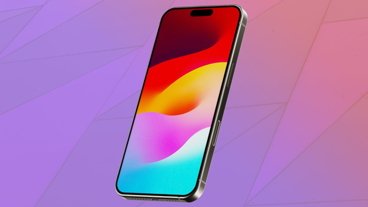
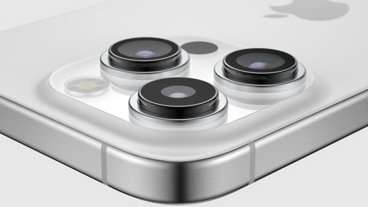


-m.jpg)






 Christine McKee
Christine McKee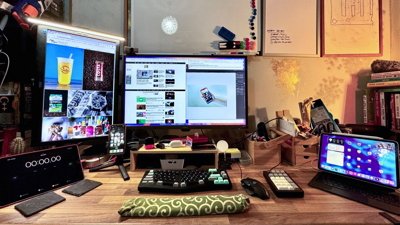
 Malcolm Owen
Malcolm Owen

 Sponsored Content
Sponsored Content

 Amber Neely
Amber Neely
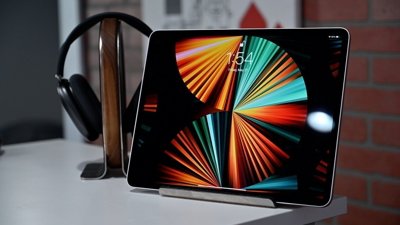
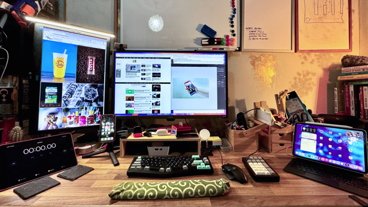









77 Comments
The order of 10 million 3G iPhones ....... is said to be in addition to the 10 million first-generation units Apple plans to sell by year's end.
[ View this article at AppleInsider.com ]
His rumor/speculation sounds awfully specific. I doubt now that 3G is going to happen in June. I wonder if it could be next MWSF's big splash in Jan 09?
His rumor/speculation sounds awfully specific. I doubt now that 3G is going to happen in June. I wonder if it could be next MWSF's big splash in Jan 09?
There's no way Apple is going to give Android-based 3G handsets a six-month head start when they are already ahead of the game right now =P
That would be a lot of control to relinquish and I'm pretty confident that is not in Apple's playbook. I believe we'll have the official word on a 3G iPhone within 2-4 months.
Best,
K
There's no way Apple is going to give Android-based 3G handsets a six-month head start when they are already ahead of the game right now =P
That would be a lot of control to relinquish and I'm pretty confident that is not in Apple's playbook. I believe we'll have the official word on a 3G iPhone within 2-4 months.
Best,
K
Agreed. It's typical Apple strategy to flood the market like they did with the iPod. However, keeping the old model is a new twist, but frankly brilliant if it brings the price point down to say $250.
IMO, a new 3G model is absolutely necessary for Apple to reach their 10m target. This along with the official SDK, app store and discounted first gen iPhone will get them there.
There's no way Apple is going to give Android-based 3G handsets a six-month head start when they are already ahead of the game right now =P
That would be a lot of control to relinquish and I'm pretty confident that is not in Apple's playbook. I believe we'll have the official word on a 3G iPhone within 2-4 months.
Best,
K
It could coincide with the announced iPhone enterprise software update at the upcoming Macworld in June. Also, we belgians expect to embrace the iPhone legally around Summer time.
I hope the new 3G phone will get rid of 1/ the black chin, 2/ the Nokia chrome edge and 3/ the brick styling in favour of a more sensual Macbook Air style approach.
http://www.engadget.com/2006/04/26/a...ng-lcd-pixels/
Sorry for the external link there, but I just thought maybe this talk of new screen tech could be something to do with Apples ancient patent on embedding video receiving pixels into LCDs. That would be some fancy video call action.